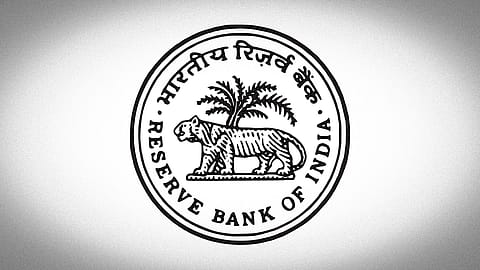RBI trims short forward dollar position to $72.5 billion amid shift toward liquidity normalisation
The RBI has reduced its net short position in the forward dollar market to $72.5 billion as of April 2025, down from $88.7 billion in February.

The Reserve Bank of India’s (RBI’s) outstanding net short position in the forward book declined to $72.5 billion by the end of April 2025, compared to $88.7 billion at the end of February, according to the central bank’s monthly bulletin.
About RBI’s move, Anitha Rangan, Economist at Equirus Securities, explained that the central bank’s negative forward book has been largest since 2007.
“Overall, the negative forward book has been the largest since 2007, with the previous peak during the taper-tantrum era when the forward book rose to $32.5 billion. However, the key ratio—forward book to reserves—stood at 11.2%. At that point, the position remained elevated for five months before moderating, led by both a decline in the forward book—turning positive—and accretion in reserves.”
As of April 30, 2025, the RBI held a significant net short position of $72.575 billion in its outstanding forward contracts, according to data published in the June 2025 RBI Bulletin.
The maturity breakdown reveals the largest exposure in the 3-month to 1-year category at $37.75 billion, followed by maturities over 1 year at $20.1 billion. Short-term exposures up to 3 months also remained considerable, amounting to over $14.7 billion combined.
This structure suggests a deliberate and strategic use of forward market operations by the RBI to balance capital flows and support rupee stability, particularly in a globally uncertain environment.
The net short position reflects the RBI’s active forward sales of dollars, likely aimed at managing surplus foreign exchange reserves, curbing rupee volatility, or supporting the domestic currency amid depreciation pressures.
Recommended Stories
The scale of the position is significant and merits close monitoring, as it provides insights into the RBI's approach to liquidity management and exchange rate stabilisation.
“During the tenure of former Governor Shaktikanta Das, the RBI adopted an assertive strategy to manage exchange rate volatility, primarily by building a substantial short forward position in the currency markets. At its peak in February 2025, the RBI’s short forward position surged to a staggering $88.75 billion—equivalent to over 15% of India’s total foreign exchange reserves, which stood at $580.663 billion at the time. This aggressive stance enabled the RBI to manage volatility effectively without direct intervention in the spot market,” said Amit Pabari, MD, CR Forex.
However, this large forward position is not currently a cause for concern. India’s robust macroeconomic fundamentals—characterised by strong growth and rising FII and FDI inflows—have given the RBI the space to absorb dollar inflows, gradually unwind forward liabilities, and rebuild its reserve buffer.
The rupee also gained in April by nearly 0.9% against the US dollar, supported by a combination of a weakening greenback and natural demand for the Indian currency from exporters and corporate inflows. This appreciation came despite heightened global uncertainty triggered by an ongoing trade war scenario.
“Under the leadership of new Governor Sanjay Malhotra, the RBI has taken a more active stance, initiating the unwinding of its short forward positions. As highlighted in the June bulletin, these positions have declined to $72.57 billion, marking a clear shift towards normalisation,” Pabari added.
“This time around, the peak was 13.9% in February 2025, but the ~11% level has persisted for five months. While reserves have improved, the net forward book has yet to see a meaningful decline. Looking ahead, we believe the RBI’s status quo on policy, coupled with liquidity support from CRR cuts expected in September 2025, is intended to offset the effects of the negative forward book unwind,” said Rangan.
Going forward, market participants will closely watch for further signs of unwinding and assess how the RBI balances domestic liquidity with currency management, especially amid ongoing global headwinds and evolving capital flow dynamics.